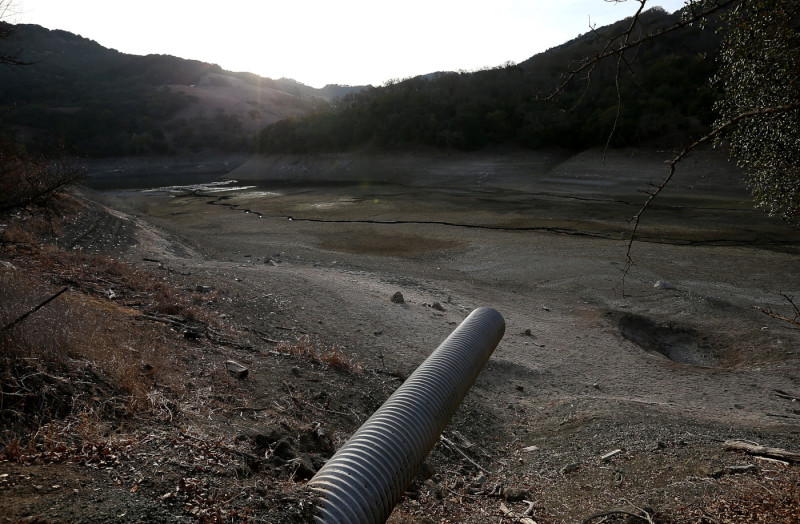ROGERS: Exactly. Many of them were vulnerable to begin with. In some cases, they couldn't even maintain and fix their equipment as it was. And then when they have a drought that gives you the least rain in the history of California back to 1850. It’s a tipping point.
SHAFER: So assuming it doesn't rain much in the next few weeks, what happens when you run out of water? You turn on the tap and what happens?
ROGERS: Depending on what community you're in, there will be different solutions. In some of these communities, what they're going to do is connect a pipeline from their water supply to another water supply that has plenty of water. If you're in a more rural area, though, you might have to truck in water for a while. You might get loans from the federal or state government or get grants to drill a new well if your well’s running dry. You might, in some extreme cases, need to set up a mobile desalination plant if it went on for a long time. So. there’s a whole suite of tools, and different communities are in different levels of emergency.
SHAFER: And all of them, as you said, relatively poor. Where do they get the funds for these kinds of things?
ROGERS: It not necessarily poor. Some of them are in somewhat wealthy communities, like Healdsburg or Cloverdale. It’s just that they do have big rate bases. If you have five or ten thousand people and you need a $500 million reservoir, each of those houses can't afford to pay that usually, so there are programs the state has, the federal government has to loan people money. But in a lot of cases, these ratepayers are going to have to pay a lot of money. They're drilling two new wells in Cloverdale right now, and that was paid with a 50 percent increase in the water bills of the people who live in Cloverdale.
SHAFER: And so if the drought continues, are we likely to see other communities in the same situation? Perhaps more urban ones even?
ROGERS: Well, absolutely. There are 3,000 water districts in California, and there are a lot of small ones. It is expensive to drill new wells, to build reservoirs, that kind of thing. So I would expect, if the drought continues, we're going to see more small areas getting into trouble and needing help. The larger areas, though, the larger districts where you have millions of customers, they're not doing mandatory rationing. They're doing voluntary 10 percent cutbacks. Santa Clara is doing that, Hetch Hetchy’s doing that, we're probably going to see that at EBMUD. They have a lot of water in storage, they have conservation programs, and the drought will have to go on much longer before there’s a severe problem with them.
SHAFER: I know in the past there’s been tension between Northern California and Southern California. L.A. is actually in pretty good shape this time around, aren't they?
ROGERS: L.A., after the last drought ended, from 1987 through ‘92, they built a big reservoir called Diamond Valley Reservoir. I think it's 800,000 acre-feet. They’ve done incredible conservation down there with rebates for low-flush toilets. Los Angeles is using the same amount of water right now in terms of gallons as they did 30 years ago even though the population has grown. So, too, is San Jose. San Jose is using the same amount of water, actually all of Santa Clara County, about 350,000 acre-feet now, as they were in 1980. There is this myth that Southern California is taking all of Northern California’s water. It’s not true. Farmers in California use 80 percent of the water people use. All 38 million residents use the other 20 percent. So when we talk about who is going to suffer the most, it’s small rural communities without a lot of money, and it’s farmers and ranchers who need the water most for their economics.
More: California Drought: 17 Communities on the Critical List
